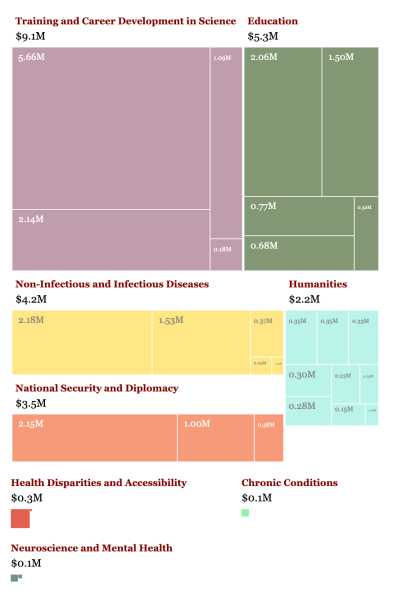University Releases Common Data Set for First Time, Shedding Light on Admissions Process
A University spokesperson told The Maroon that the administration reevaluated its approach to the Common Data Set and now plans to complete the survey annually.
The University has completed its first ever Common Data Set (CDS) report, an annual survey jointly administered by the College Board, U.S. News and World Report, and Peterson’s and meant to standardize data reporting among colleges and universities. According to University spokesperson Gerald McSwiggan, the University expects to continue completing the survey for future academic years.
As described by the CDS website, the survey’s goal is “to improve the quality and accuracy of information provided to all involved in a student’s transition into higher education, as well as to reduce the reporting burden on data providers.”
The University has previously declined to complete the CDS, making it one of only a handful of elite institutions to do so. Among the nation’s top 20 universities as ranked by U.S. News, only UChicago and Columbia had never completed the survey prior to 2022. Columbia also completed the CDS for the first time in 2022.
The Office of Institutional Analysis published the completed CDS on its website in December 2022.
In a statement to The Maroon, McSwiggan said, “The University releases a large amount of public data, including the information that all universities are required to submit annually through the NCES [National Center for Education Statistics]. We routinely work with reporters on many kinds of additional data and information requests. In the past this has been our approach to the limited number of requests for the CDS. As other institutions have in recent years, the University last year reviewed our approach to the CDS and posted it on a UChicago website.”
The current CDS provides information for the 2021–22 academic year. Most of this information was already publicly available on several relevant University webpages, but the survey provided previously unknown information pertaining to admissions data for the Class of 2025.
Section C of the CDS, labeled “[f]irst-time, first-year (freshman) admission,” asks the respondent to provide the number of applicants, admitted students, and enrolled students, all broken down by gender. The University received 17,513 applications from men compared to 20,445 applications from women but admitted 1,254 men and 1,206 women.
Section C also asks the respondent to weight various factors in admissions decisions. Factors can be weighted as “very important,” “important,” “considered,” or “not considered.” The factors listed as most important were application essays, recommendations, extracurricular activities, “rigor of secondary school record,” “talent/ability,” and “character/personal qualities.”
No factors were weighted as “important,” and only one factor, interviews, was weighted as “not considered.” All other factors—including GPA, standardized test scores, class rank, first-generation status, relationship to alumni, and racial or ethnic identity—were listed as “considered.”
This breakdown of admissions criteria noticeably differs from those of peer institutions. Most of the other universities ranked in the top 20 nationally by U.S. News weight GPA, test scores, and class rank either as “important” or “very important.”
Section C of the CDS also provides information on the submitted test scores and GPAs of admitted students. Unlike the previous “class profiles” released by the Office of College Admissions, the CDS features a breakdown of GPAs and test scores by percentile, and it provides a breakdown of section subscores for the ACT and SAT. The CDS also provides data on the class ranks of admitted students and the percentage of students submitting test scores, class rank, and GPA.
The University did not complete every part of the CDS, however. In Section C, the University left blank spaces for the number of waitlisted students, the number of students admitted off the waitlist, and the number of students who were admitted through the University’s Early Decision application rounds.
McSwiggan did not address The Maroon’s inquiry about these specific omissions. In the past, the University has declined to release a breakdown of its admissions statistics by each application round.
In his statement, McSwiggan said that the University plans to release its CDS report for the 2022–23 academic year at an unspecified time “later this year.”
Your support will ensure that we can continue producing powerful, honest, and accessible reporting that serves the University of Chicago and Hyde Park communities.













Mark Zelek / Apr 28, 2023 at 7:23 am
I salute Justin Walgren and The Maroon for spotlighting the University’s failure to complete the CDS’s question about the number of waitlisted students, the number of students admitted off the waitlist, and the number of students admitted in each of its Early Action, Early Decision I, and Early Decision II rounds. This failure (as well as Gerald McSwiggan’s failure to even address the Maroon’s inquiry about these specific omissions) is at odds with the University’s claimed commitment to the free expression of ideas and questioning viewpoints. I suspect that the University is trying to hide that it “games” the waitlist and highly unusual tripartite early decision/early action process to “juice” its yield rate and lower the admission rate. I encourage The Maroon to get to the bottom of these issues which are important to prospective students and bond rating agencies, among others.